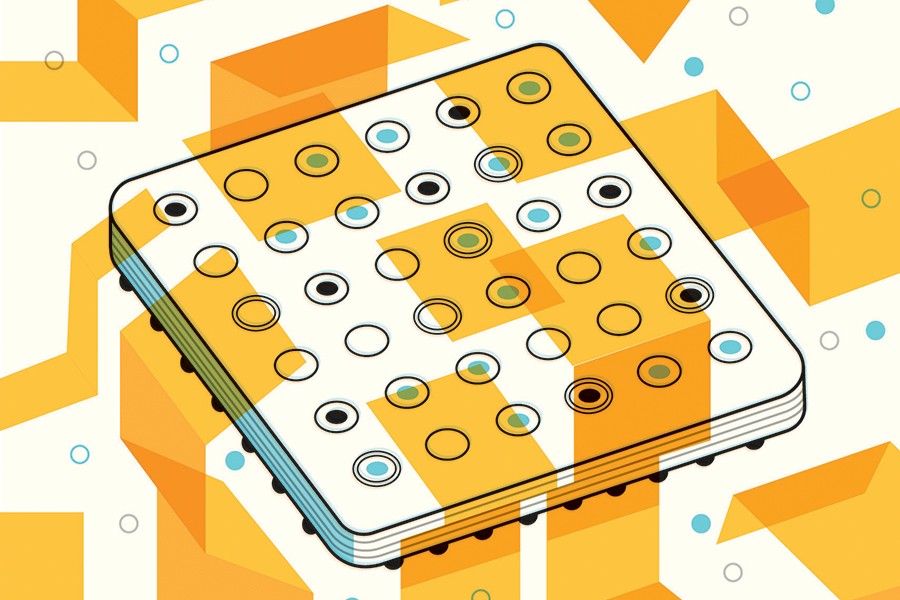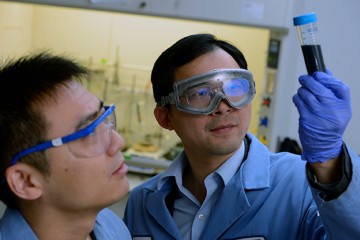It sounds almost too good to be true—an electric car powered by hydrogen gas, emitting not exhaust but a cloud of harmless water vapor. Without a battery to charge, these fuel cell–powered vehicles are more convenient than traditional electric cars. But the fuel cells are made with platinum, one of the rarest and most valuable metals on earth. The cars are being manufactured but are simply too expensive for most drivers.
A Johns Hopkins team led by Chao Wang, an assistant professor of chemical and biomolecular engineering, has come up with a technique to make these fuel cells cheaper and more effective: coating inexpensive cobalt with a layer of platinum atoms just one nanometer thick—about 100,000 times thinner than a strand of hair. Wang says he was inspired by a book he read as a child, which described how the ancient Egyptians would coat masks, jewelry, and sarcophagi made from inexpensive materials with a thin layer of gold.
Context
Platinum is difficult to mine and refine, but it is extremely useful. A nonreactive metal, it works as a sort of matchmaker, catalyzing reactions between other molecules without being affected itself. This makes it a key ingredient in the production of electronics, fuel, medications, and more. And, of course, its sheen and durability make it desirable for jewelry. In a fuel cell–powered car, platinum speeds up a reaction between hydrogen and oxygen from the air, producing electricity and water. "Precious metals are precious not only due to their rareness but also because of their unique properties and capabilities," Wang says. "A lot of industrial processes rely on precious metal catalysts. We couldn't apply precious metals to every surface in which we'd like to use them."
Challenge
Wang wasn't the first to try plating precious metals onto less-expensive metals at the nanoscale, but previous attempts had failed because the nonprecious metal would oxidize, undergoing a chemical change in the presence of oxygen. Wang's team experimented with flooding the cobalt with carbon monoxide. It worked—the CO gas prevented oxidation, freeing the cobalt to bind with the platinum.
Results
After the carbon monoxide treatment, platinum atoms were wrapped around a core of cobalt nanoparticles, completely covering the nonprecious metal. But the hybrid metal did not behave exactly like pure platinum; it actually proved to be 10 times more effective as a catalyst than platinum alone. The close proximity of the two metals' atoms enhances platinum's power as a catalyst. "We save money and get better performance, which is the whole goal," Wang says.
Next steps
"There are still a lot of questions to answer: Could we make it even better by using different metals? Can we generalize this approach to other catalysts?" Wang says. Another hurdle, he adds, is how to scale up the manufacturing. Since his team's initial experiments with cobalt, they have moved on to bonding platinum to copper, which they find to be an even more effective combination. The team expects to publish this research later this year. Wang's group is also exploring other applications for the technology, including in solar panels. Wang is hopeful that the technique could be used in electric car fuel cells within the next five years. "My goal has always been to drive a car with my own fuel cell technology," he says.
Posted in Science+Technology









